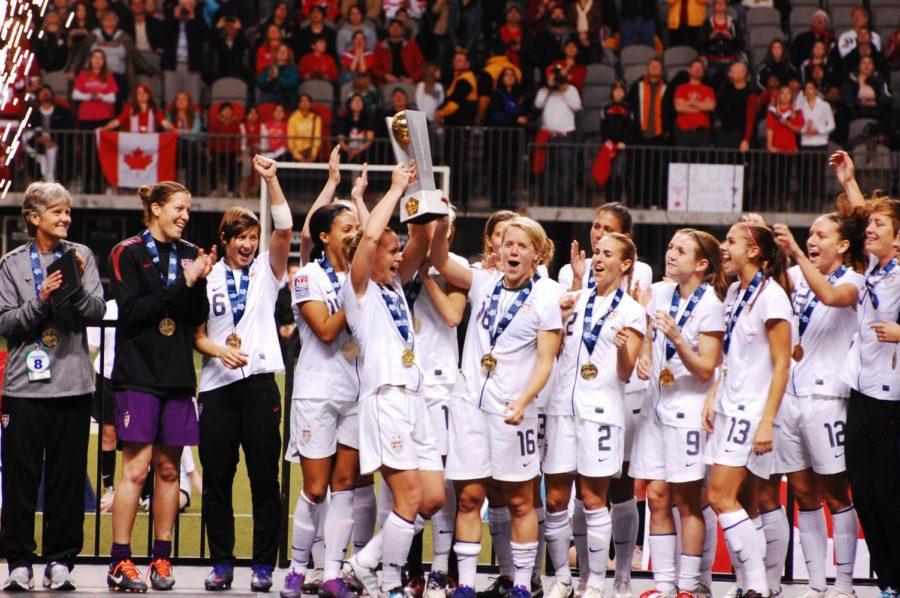Editorial: Women’s soccer wage dispute raises questions, shows larger issues remain
women’s soccer.jpg
April 6, 2016
The U.S. Soccer Women’s National Team filed a federal complaint against U.S. Soccer saying the governing body participated in wage discrimination because the women make less than members of the men’s national team. Five of the top players on the team signed the complaint, saying despite being much more successful than their counterparts, they are paid significantly less in many different categories than the men, according to a New York Times article.
The men’s and women’s teams have different pay structures. The women are paid in salary — $72,000 per year — over the course of a required 20-match exhibition season each year. This is supplemented by bonuses for wins and “per diem” pay or a daily allowance during camp or while they are at venues to compete. The men, however, also receive these bonuses and are paid on a more “play-for-pay basis,” according to the article. Despite the difference in pay system, the women still say they make about 40 percent of what the athletes on the men’s team make, according to the complaint.
A player on the women’s team make $3,600 per friendly match if the salaries are divided evenly over the 20 games. A bonus of about $1,350 is added for a win. A player on the men’s team makes $5,000 per exhibition match with a bonus of $8,166 if the team wins. These differences are seen in World Cup wins as well, according to a New York Times chart.
U.S. Soccer explains the discrepancies are because the men’s team has higher attendance, television ratings and revenue than the women’s team. However, the women’s team has traditionally been more successful than the men’s teams — winning the last Olympic games and World Cup title. So what kind of results deserve more pay?
While this answer may be unclear, wage discrimination in sports is a gray area because men’s teams tend to be much more popular in our country — the case does raise a couple important questions when it comes to the pay gap in our country: Are women any closer to being paid on an equal level to men of the same profession in our country? How can we make women in the workplace more equal to their male counterparts?
No matter the answers to those questions, recognizing that a pay gap still exists is the first step. A high profile complaint, by some of the most successful women athletes in our country’s history, is the perfect opportunity to shed light on the issue and spark further conversation. It is encouraging to see prominent women take a stand, for not only themselves, but their teammates and coworkers as well. It is activism like that of these five players that is the most encouraging for the status of women in this country.

















